Radio facilities, particularly mountaintop transmitter sites, are prone to power transients. The causes can be varied, but most often, lightning is the culprit. Long power transmission lines to the site are vulnerable to direct strikes and EMF-induced spikes from nearby strikes. Other issues, such as switching transients, load fluctuations, and malfunctioning equipment can lead “clear weather” outages. Of course, the best way to deal with such things is through prevention.
Power line surge suppressors have been around for quite some time. They usually take the form of a MOV (Metal Oxide Varistor) connected between the hot leg and neutral or ground. There are a few differences in designs, however. Typically, most facilities employ a parallel surge suppressor. That normally takes to form of an enclosure hung next to the main power panel with a group of MOV modules in it. The MOVs are fed from a circuit breaker in the panel. Like this:
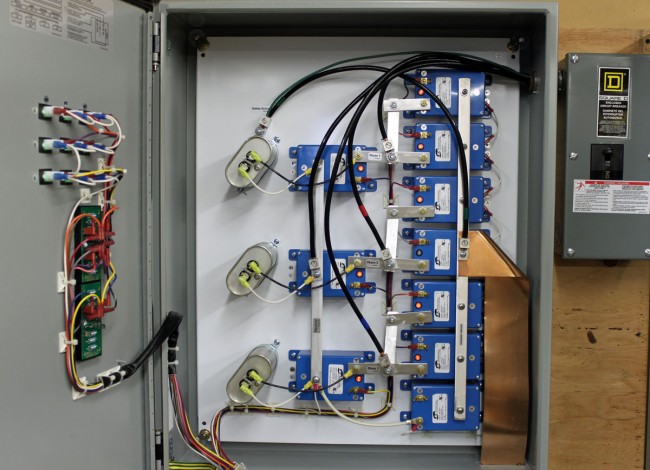
This is an LEA three-phase 208-volt shunt surge suppression unit, which has MOVs between all phases to ground and each other. That is connected in parallel to the electrical service with the circuit breaker disconnect. These function well enough, provided there is a good bit of series inductance before the unit and also, preferably after. The series inductance can come from many sources, including long secondary leads from the utility company transformer or electrical conductors enclosed in metal conduit, particularly rigid (verses EMT, or FMC) metal conduit. The inductance adds a bit of resistance to the transient voltages, which come in higher than 50 or 60 Hz AC waveform.
A better method of transient protection is the Series Surge Suppressor. These units are installed in line with the incoming service and include an inductor to add the required series resistance coupled with MOVs and capacitors. Most series surge suppressors also filter out harmonics and RF by design, something desirable, particularly at a transmitter site. Series surge suppressors look like this:
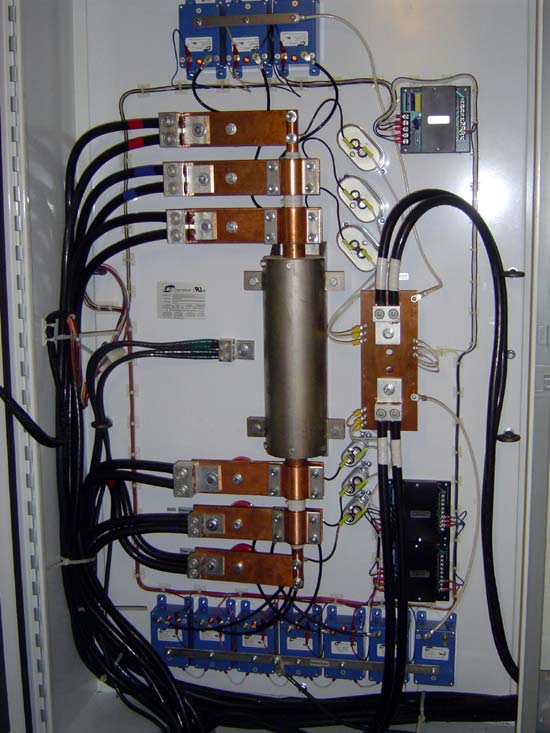
This is an LEA three-phase 240-volt unit. As in the other example, all phases have MOVs to neutral and each other. There are MOVs and capacitors on the line and load side of this unit (the line side is the bottom of the inductor). A basic schematic looks like this:
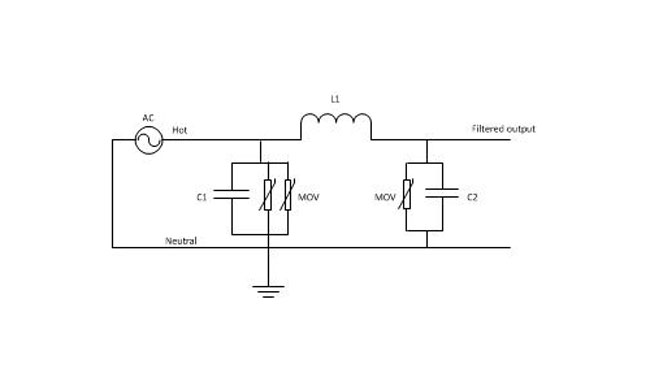
A few things to note; MOVs have a short circuit failure mode and must be fused to protect the incoming line from shorts to the ground. MOVs also deteriorate with age, the more they fire, the lower the breakdown voltage becomes. Eventually, they will begin to conduct current at all times and heat up, thus they should also be thermally fused. MOVs that are not properly protected from overcurrent or over-temperature conditions have the alarming capacity to explode and/or catch on fire. From experience, this is something to be avoided. Matched MOVs can be paralleled to increase current handling capacity.
The inductor is in the 100 µH range, which adds almost no inductive reactance at 60 Hz. However, it becomes more resistive as the frequency goes up. Most transients, especially lightning, happen at many times the 60 Hz fundamental frequency used in power distribution (50 Hz elsewhere unless airborne, then it may be 400 Hz).
Capacitors are in the 1-10 mF range and rated for 1 KV or greater as a safety factor. The net effect of adding capacitance is to create a low-pass filter. Hypothetically speaking, of course, playing around with the capacitance values may net a better lowpass filter. For example, at 100 uH and 5 mF, the cutoff frequency is 225 Hz, or below the fourth harmonic. Care must be taken not to affect or distort the 60 Hz waveform or all sorts of bad things will happen, especially to switching power supplies.
These units also need to have a bypass method installed. If one of the MOV modules needs to be replaced, power to the unit has to be secured. This can be done by connecting it to the AC mains before any generator transfer switch. That way, the main power can be secured and the site can run on generator power while the maintenance on the surge suppression unit is taking place.


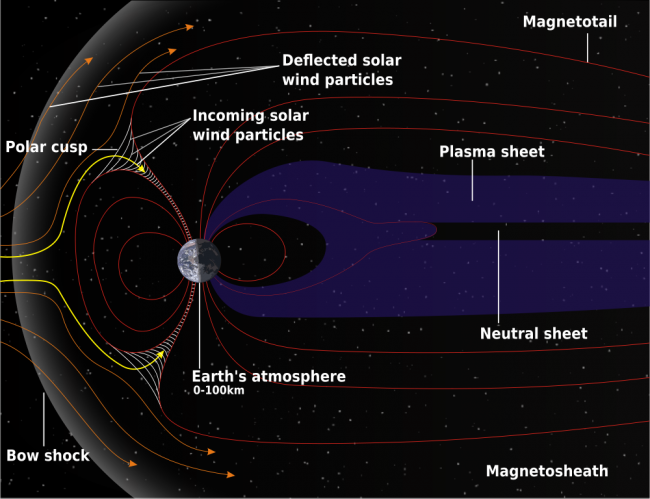
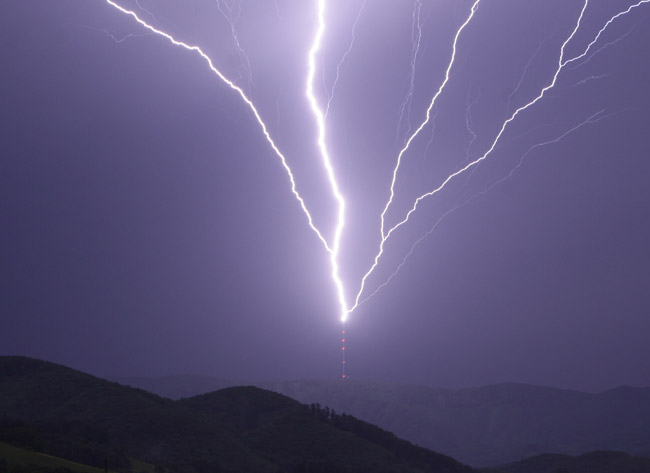
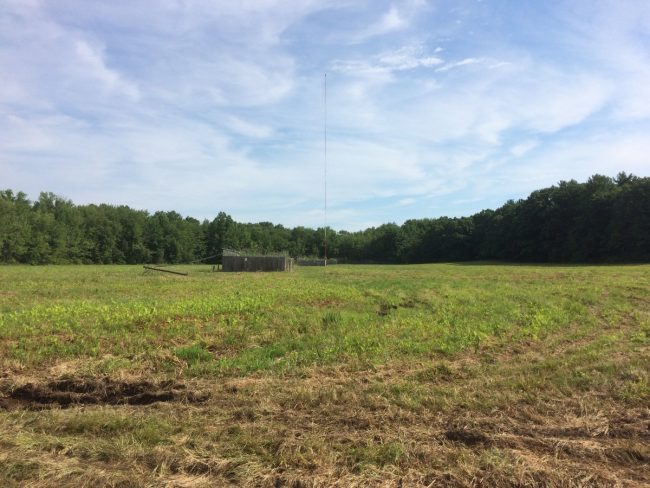
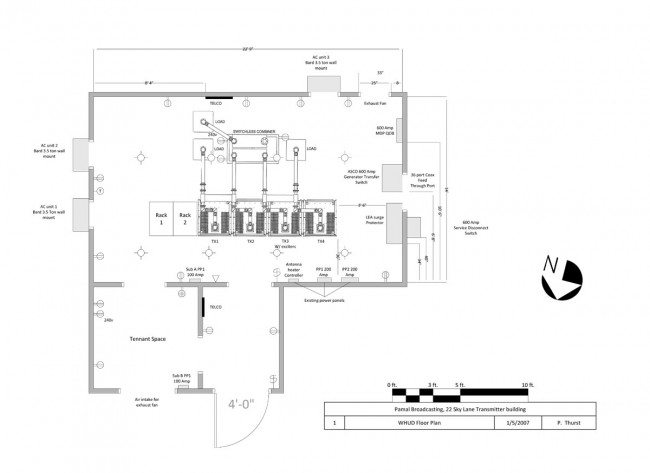
I’ve seen much smaller whole-house surge protectors installed on circuit breaker panels, protected by a dual breaker. The problem I see with having one of these is that it eventually fails as part of its protection job, which causes the breaker to pop. Now you’ve got NO protection, unless you just happen to look at the panel and notice the breaker or LED on the unit is off. So then someone has to replace it. This is great if you get one surge every few years, but I think they tend to happen more than we realize. I suppose a little bit of protection is better than none at all.
I’ve repaired stuff that was damaged by lightning-induced surges at the end of a 100ft power run, and that’s where the lightning seems to come in from, not the main power panel. Granted, when it does come in from the feed, these large devices will handle the job.